
views
Counting the Beats to Find a Song’s BPM

Listen to the song to find the beat. The beat of the song is often referred to as its “pulse.” This is the steady, even sound that you typically tap your foot or bop your head to. Simply play your song and let yourself tap or bop to the beat to get familiar with it. Drums and bass typically drive a song’s beat. Try to tune out other instruments, like the guitar, to find the beat. Listen to the song in a quiet space or with headphones on to help you concentrate on the beat. If it’s hard for you to hear the beat, turn up the song’s bass to make the other instruments and melodies less distracting.

Play the song and start a stopwatch at the same time. To calculate a song’s beats per minute (BPM), you play the song and count how many beats you hear in 15 seconds. So, cue up your song and start a stopwatch or your phone’s timer as soon as the first beat plays. If you’re listening to the song on a turntable and mixer, make sure the pitch is set to 0.
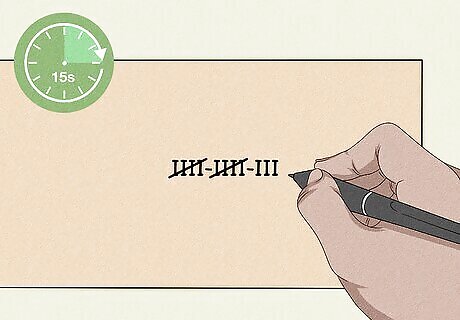
Count how many beats you hear in 15 seconds. With the song and stopwatch started, make a mark on a sheet of paper for every beat you hear. Or, count out the beats you hear on your hands. Just stop counting the beat when the stopwatch reaches 15 seconds. Alternatively, count out how many beats you hear in 30 seconds.
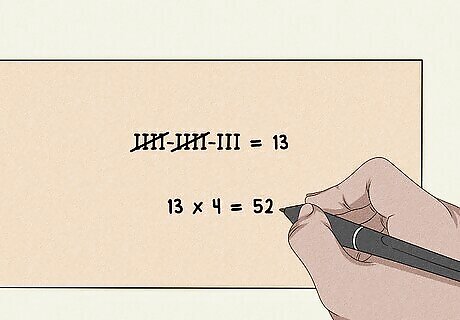
Multiply the number of beats you counted by 4 to get the BPM. Simply multiply the beats you counted in 15 seconds by 4 to get the total number of beats played in 60 seconds (1 minute). This gives you the song’s BPM! For example, say you counted 20 beats in 15 seconds. Just multiply 20 by 4, which gives you 80. So, your song’s BPM is 80. If you counted the number of beats in 30 seconds, just multiply the number of beats by 2. The greater the BPM, the faster the song. For instance, a song with a BPM of 120 is pretty quick and twice as fast as a song with a BPM of 60, which is considered fairly slow.
Calculating BPM Using a Song’s Time Signature

Listen to the song to determine the song’s time signature. Another way to calculate the BPM of a song is by counting out the number of beats you hear in a bar (also called a measure). Play your song and listen for a repeating pattern of steady beats. Then, count out the beats you hear starting at “1,” like “1-2-3-4.” When the pattern repeats, start back at “1” again. Pay attention to the strongest beats as you count, like the drums and bass. This helps you get a sense of when to start over again at 1. For example, in a 4/4 song, it will feel natural to count “1-2-3-4, 1-2-3-4,” and so on. It’s common for songs to have 4 beats per measure, but this is not always the case. For example, waltzes typically have 3 beats to a measure.Tip: One of the easiest ways to figure out the time signature of a song is to look at its score or sheet music. The time signature appears at the beginning of the score immediately after the key signature, in the form of a fraction (e.g., 4/4, 3/4, or 6/8). The top number represents the number of beats in each measure.
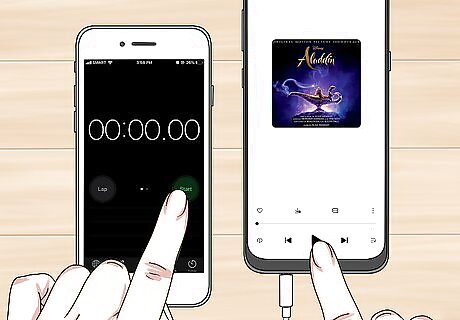
Start the song and a stopwatch at the same time. When you have a sense of the song’s time signature, simply calculate the beats per minute (BPM) by counting the number of bars, or measures, that go by in 1 minute. To begin, play the song and start your stopwatch at the same moment that you hear the first beat. Alternatively, use the stopwatch feature on your phone or look at a clock’s second hand. It can take some practice to start the song and the stopwatch at the same time. Make sure the pitch is set to 0 if you're listening to the song on a turntable and mixer.
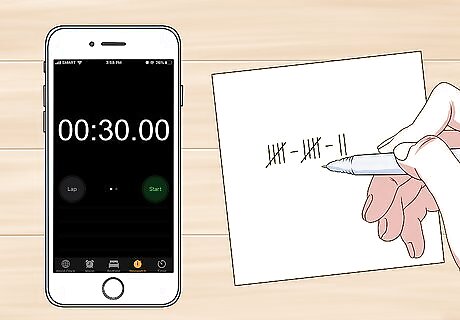
Make a mark for every full measure you hear in 30 seconds. As you listen to the song with the stopwatch running, make a mark on a piece of paper every time you hear the first beat of a new measure (the downbeat). Stop counting and stop the stopwatch when you hit the 30-second mark. You may end up stopping the stopwatch partway through a measure. For example, you might count 10 and ½ bars. If this happens, indicate on the paper that the final count was for only ½ a measure.
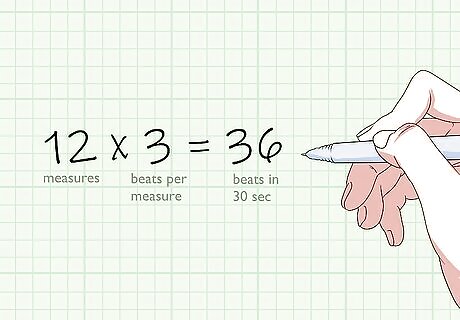
Multiply the number of measures by the number of beats per measure. Count up how many measures you heard in 30 seconds. Then, multiply this number by the number of beats in each measure. This tells you how many beats are played in 30 seconds. For example, say you counted 12 measures in 30 seconds and your song has 3 beats per measure. Simply multiply 12 by 3 to get 36. This means there are 36 beats in 30 seconds of the song. If you stopped counting in the middle of a measure, add however many beats you heard to the total number of beats from the full measures. For example, say you heard 10 and ½ measures and there are 4 beats per measure. Multiply 10 by 4 to get 40 beats. Then, add 2 more beats from the ½ measure (half of 4 is 2). So, there are 42 beats in 30 seconds of the song.
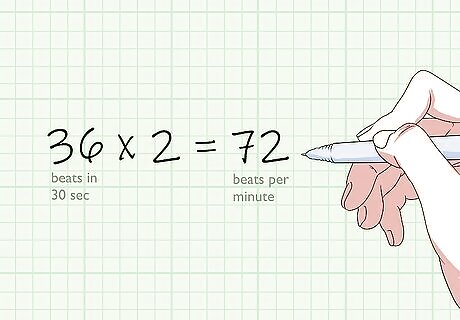
Multiply the number of beats in 30 seconds by 2 to get the BPM. Simply double the beats you counted in 30 seconds to find the total number of beats played in 60 seconds (1 minute). Now you know the song’s BPM! For example, if you counted a total of 36 beats, multiply 36 by 2. So, the BPM of the song is 72.

Practice beatmatching with 2 songs at once. Even if 2 songs have the same time signature and overall BPM, the beats may not match up exactly. This is especially true when you’re working with live recordings and vinyl instead of digital tracks. To practice beatmatching, start by taking songs that you know well and that have the same BPM (or are within 5 BPMs of one another). Then, listen until you find a good cue to guide you as you sync the songs up. For example, maybe your B track has a loud bass drum beat on the first beat of each bar. Line up the first beat of the bar you choose with the first beat of another bar in the A track. Concentrate on your cue and listen for places where the beats of the 2 songs no longer line up because of tempo changes. From there, decide on the perfect spot to make the transition from one song to the other. Most DJ software has built-in features to make the beatmatching process easier. However, being able to beatmatch by ear helps you deal with tempo variations the software may not pick up on.
Using Tools and Software to Find a Song’s BPM

Search for a BPM calculator online and tap in your beats. There are a number of free websites and apps that use a beats per minute (BPM) calculator to find a song’s BPM. With most calculators, you simply tap the button on the screen or press a key on your keyboard every time you hear a beat. The calculator then totals up the BPM based on your taps. Simply search for “music BPM calculator” or “music BPM counter” in your web browser or app store to find a variety of BPM calculators. A few good options include apps like Tap That Tempo and BPM Tap Counter. For an online option, try Beatsperminuteonline.com. Most audio software packages like Cubase and VirtualDJ have features for tapping out or automatically analyzing BPM. However, some software isn’t free.

Use an MP3 to BPM calculator to automatically analyze your song. Some BPM counters are designed to analyze the BPM of a track automatically, with no input from you. Simply upload your song and wait for the program to find the song’s BPM.Keep in mind: While these analyzers are helpful and simple to use, they’re not always accurate. Some tracks are more difficult to analyze than others due to variations in the tempo, so you may need to double-check the results with an old-fashioned manual beat count. Search for keywords like “BPM analyzer” or “MP3 to BPM” online or in your app store to find a calculator. Some good programs include GetSongbpm.com and the MixMeister BPM Analyzer. Or, try the BeatGauge BPM Detector app.

Look for your song in a BPM database. If you don’t want to worry about finding the BPM yourself, there’s a good chance someone already calculated your song’s BPM! There are several BPM databases available that provide the BPM for most popular tracks. Just search for the title of your song and “BPM” to see if a matching track comes up. Or, manually search for your song on a BPM database like: Tunebat.com Songbpm.com BPMdatabase.com
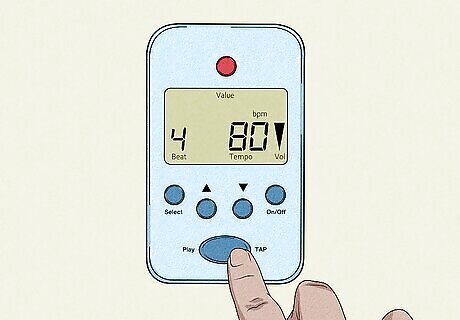
Tap out the song’s beat using a metronome. Most metronomes have a button for tapping a beat into the device so the metronome calculates the BPM. To use the metronome’s BPM feature, play your song and press the button every time you hear a beat. Your metronome will then set the tempo and display the BPM. If you don’t have a physical metronome, use a metronome app to tap out the BPM.
Common BPMs for Different Genres
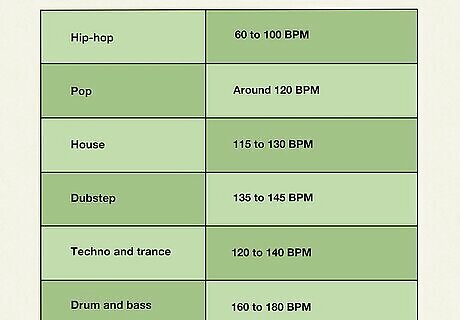
Some genres of music have a typical range of BPMs. While every song is different, songs that belong to a specific genre or style typically share a common BPM. Knowing a genre's BPM range can help you figure out what songs mix well while DJing. For instance: Hip-hop songs typically have a BPM between 60 to 100. Pop music generally has a BPM of around 120. House music typically has a BPM between 115 to 130. Dubstep usually has a BPM between 135 to 145. Techno and trance songs generally have a BPM between 120 to 140. Drum and bass songs usually have a BPM between 160 to 180.

















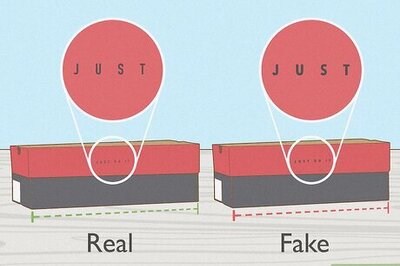

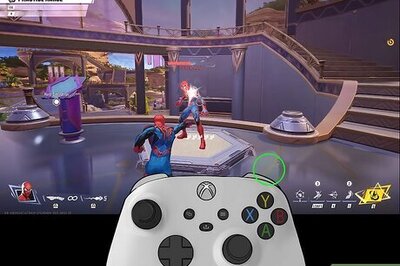
Comments
0 comment